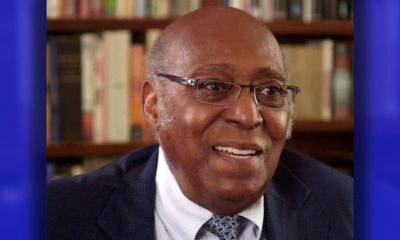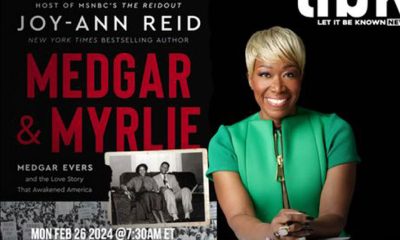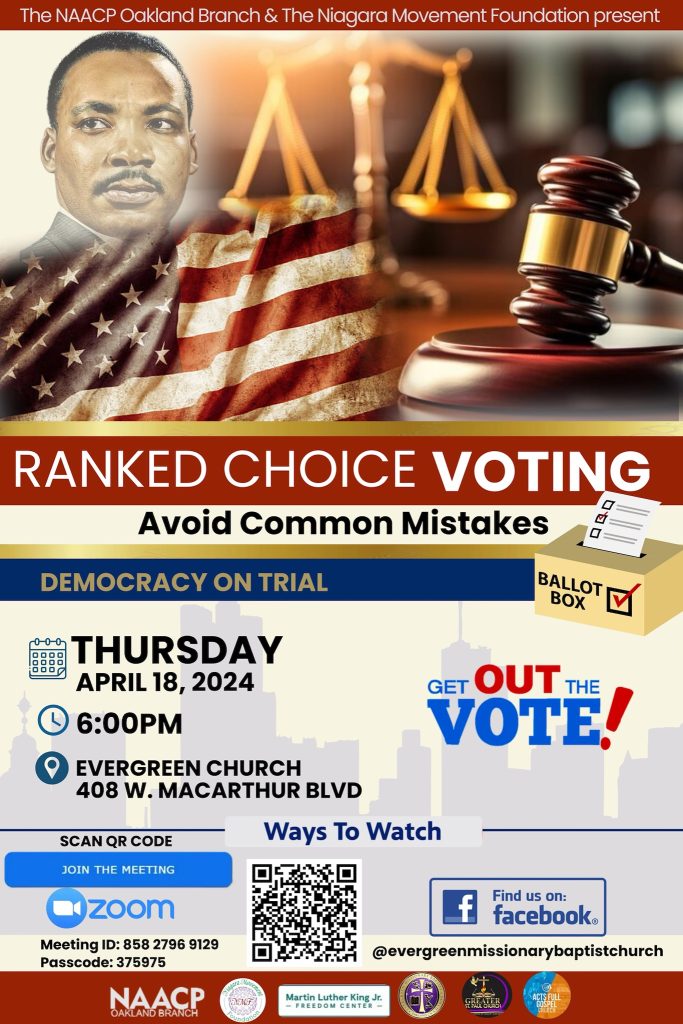Film
FILM REVIEW: Best of Enemies
NEW JOURNAL AND GUIDE — The Best of Enemies is based on a true-life story. Taraji P. Henson plays Ann Atwater, a civil rights leader in 1971 Durham, North Carolina. Her rival in the movie is the Exalted Leader of the KKK, C. P. Ellis, a devout racist who spends most of his life spreading hate and separateness between the races. However, with their children in common, the two opposites eventually become friends.
By Michael Hernandez
The Best of Enemies is based on a true-life story. Taraji P. Henson plays Ann Atwater, a civil rights leader in 1971 Durham, North Carolina. Her rival in the movie is the Exalted Leader of the KKK, C. P. Ellis, a devout racist who spends most of his life spreading hate and separateness between the races. However, with their children in common, the two opposites eventually become friends.
To play Ann Atwater, Henson’s appearance had to be changed. To achieve this the normally svelte actress used a “fat suit” to play her role. It’s an amazing transformation for the Academy Award-nominated actress.
The Exalted Cyclops of the KKK is portrayed by Sam Rockwell. He goes through an amazing transformation too, but it’s not his appearance, it’s his heart that transforms.
You couldn’t tell one story without telling the other, so the two main characters are intertwined. There’s archival footage of the real-life characters as they explain how a love/hate relationship became a true friendship.
The best part of the movie is Rockwell’s role as Klan leader, C. P. Ellis. He evolves and discovers that Blacks and whites are more alike than he was raised to believe.
The bottom line of the story is that love always wins over hate.
The Best of Enemies is rated PG-13 for racist language and violence. It runs 2 hours and 13 minutes.
On my “Hollywood Popcorn Scale,” I rate this movie a JUMBO.
This article Originally appeared in the New Journal and Guide.
Arts and Culture
BOOK REVIEW: Black Entertainers on Big and Small Screen Recalled in New Books by Two Authors
Once was a time when you rarely saw a Black face in entertainment unless you were specifically looking for one — which is why these great books on Black entertainers are so essential to read.
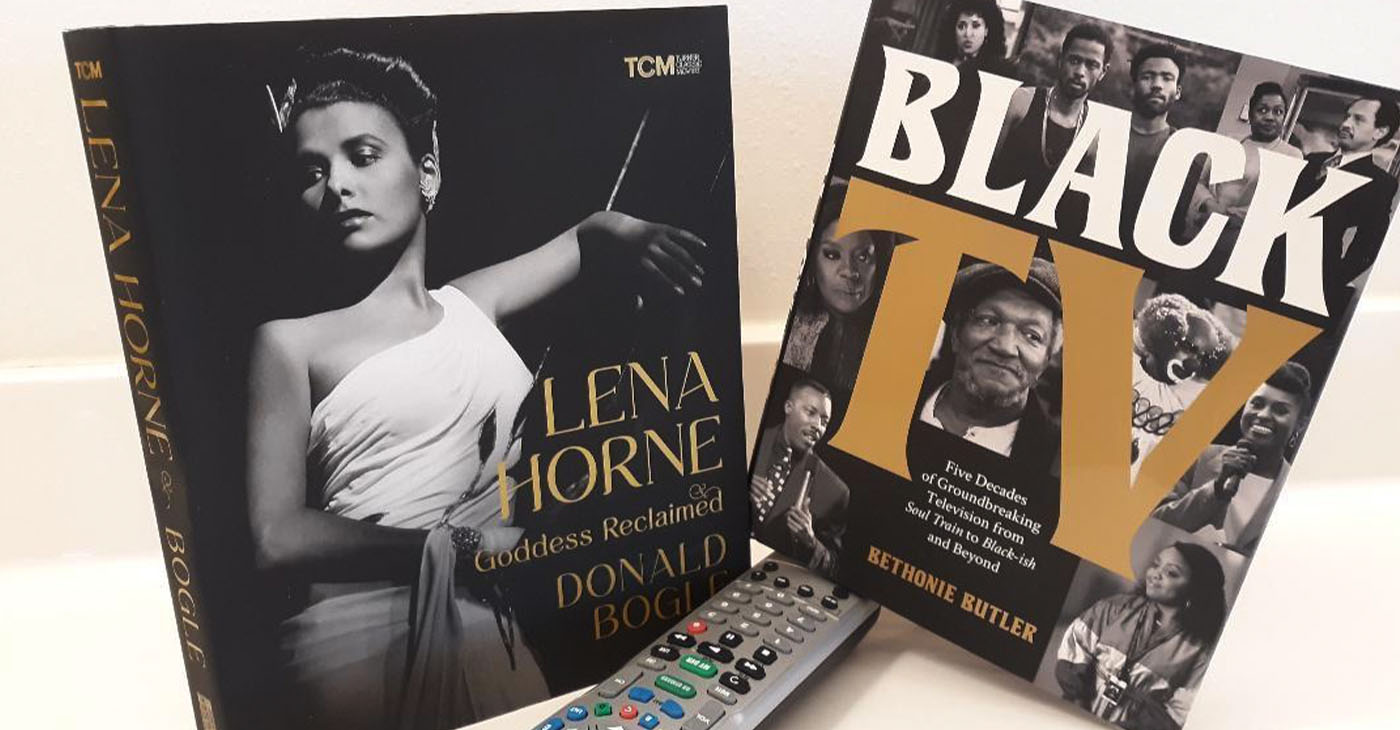
By Terri Schlichenmeyer, The Bookworm Sez
The person on the screen looks just like you.
And that’s important. Once was a time when you rarely saw a Black face in entertainment unless you were specifically looking for one — which is why these great books on Black entertainers are so essential to read.
First of all, elegance almost oozes from “Lena Horne: Goddess Reclaimed” by Donald Bogle. The gorgeous book is part of the Turner Classic Movie Library.
Bogle begins his narrative in the spring of 1993 when “a radiant Lena Horne entered the famous MGM recording soundstage for the first time in nearly 40 years.” She was there to shoot footage for a compilation movie on entertainment and, Bogle says, it was “a bittersweet experience.”
From there, he takes readers through the briefest of childhood biographies before getting to the good stuff: Horne’s career that began in Harlem. It was the Great Depression and competition for the best positions at the Cotton Club was fierce. Despite the fact that the Club had other beautiful women onstage, it was Horne who “caught the eye of just about everyone who saw her.”
Filled with everything you want to know about Lena Horne — her life, loves, and many of her contemporaries — “Lena Horne: Goddess Reclaimed” is comprehensive and wide. It’s one of those books you’ll want to keep on your coffee table to browse and show off. Bonus: carefully chosen photos enhance what you’ll read.
If the small screen is more your thing and you want to remember how far television’s come over the decades, then you’ll want “Black TV” by Bethonie Butler.
Ask any TV viewer about their favorite show or series, and if it’s got a full cast of Black actors, you’ll probably find it in this heavy volume. Comedies, dramas, even variety series have their own chapters; Flip Wilson, Redd Foxx, Arsenio Hall, Diahann Carroll, they’re all in here.
With this book on your lap, you’ll take a trip to the Soul Train studio and visit the Huxtable living room. Remember how “In Living Color” skewered almost everything? Remember the night James Evans of “Good Times” died? Which “Sister, Sister” twin was your favorite? Is the new version of “The Wonder Years” realistic enough for Black audiences?
This book is absolutely packed with insider information, memories, stars, guest stars, and lots of pictures to nudge your nostalgia and send you looking for something to binge-watch on repeat or to catch new. It’s a great book to share with generations who missed seeing these shows live. Or just sit and read “Black TV” and let that be tonight’s entertainment.
If these books on Black entertainment aren’t enough for you, then be sure to look around for more. Bogle has several other biographical volumes on the shelves.
You’ll find books about and by Black stars, books about specific movies and TV shows, retrospectives that will take you way back, and more behind-the-scenes peeks of your favorite series. Your bookseller or librarian will be able to put these books in your hand because they’re good like that.
And so are these books.
“Lena Horne: Goddess Reclaimed” by Donald Bogle, c.2023, Running Press, $35.00, 264 pages
“Black TV: Five Decades of Groundbreaking Television from Soul Train to Black-ish and Beyond” by Bethonie Butler, c.2023, Black Dog & Levanthal, $35.00, 287 pages
Antonio Ray Harvey
Hollywood Under Fire: Black Caucus Members Concerned About Black Women Execs Leaving Entertainment Industry
On July 13, California Legislative Black Caucus (CLBC) members Sen. Lola Smallwood-Cuevas (D-Los Angeles) and Assemblymember Tina McKinnor (D-Inglewood) led a group of lawmakers at a news conference at the State Capitol to express their concerns over various news reports of abrupt departures of Black women leaving high-profile careers in Hollywood after the state recently approved $1.6 billion in tax credits for the industry.
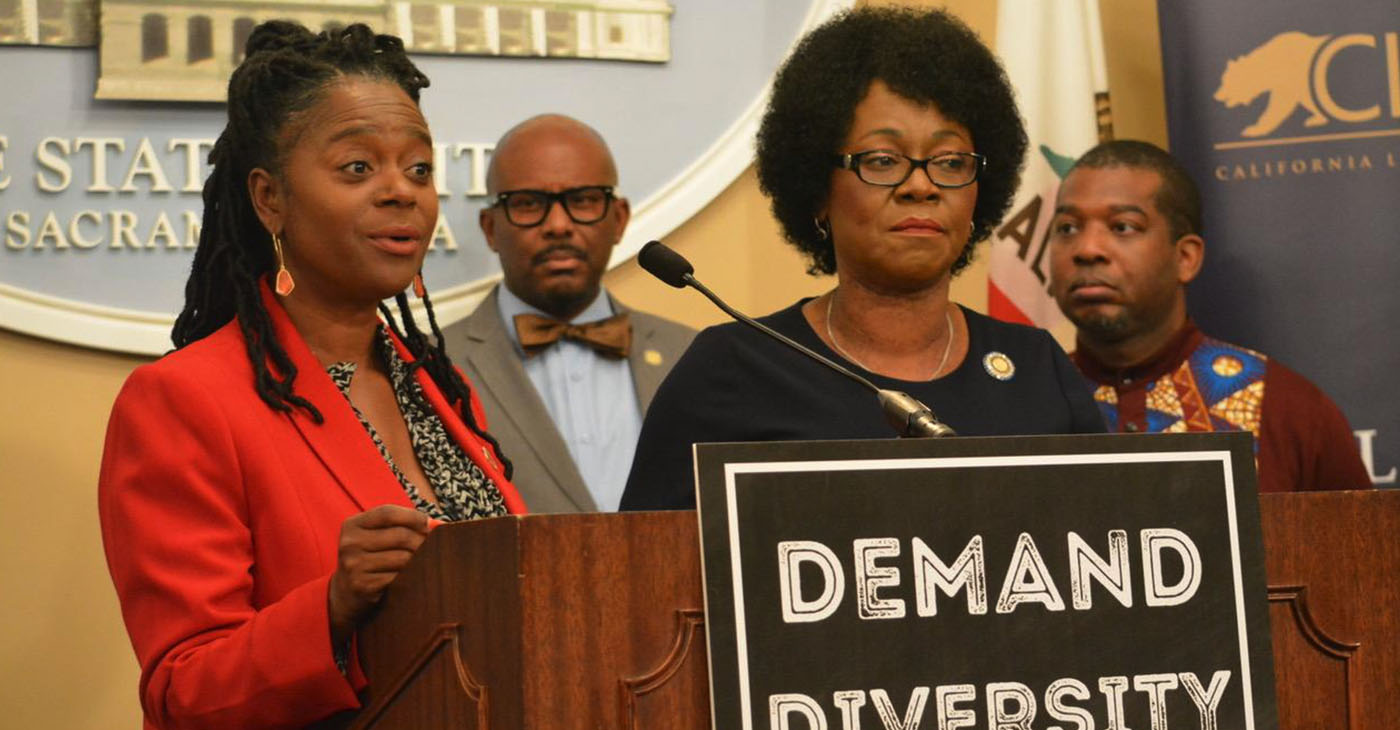
By Antonio Ray Harvey
California Black Media
Film studios in Hollywood took a one-two punch last week after actors announced they were joining the ongoing writers’ strike while legislators in Sacramento questioned their commitment to Diversity Equity and Inclusion (DEI).
On July 13, California Legislative Black Caucus (CLBC) members Sen. Lola Smallwood-Cuevas (D-Los Angeles) and Assemblymember Tina McKinnor (D-Inglewood) led a group of lawmakers at a news conference at the State Capitol to express their concerns over various news reports of abrupt departures of Black women leaving high-profile careers in Hollywood after the state recently approved $1.6 billion in tax credits for the industry.
The press conference was held the same day the Screen Actors Guild-American Federation of Television and Radio Artists (SAG-AFTRA), the union representing Hollywood actors, joined striking Writers Guild of America (WGA) members in the biggest labor dispute the American entertainment industry has seen in 63 years.
In recent weeks, several Black women who were executives leading Diversity, Equity, and Inclusion (DEI) initiatives at major entertainment companies have left their positions.
“We are here today, calling on industry executives to meet with the state legislative Black caucus and leaders in the coming weeks to explain what is behind this erasure,” Smallwood-Cuevas (D-Los Angeles) said at the press briefing.
“(We want them to) provide the evidence of how diversity, inclusion and the progress made will continue to move forward given the lack of leadership and gravitas at the forefront of those proposals,” added Smallwood-Cuevas.
Netflix’s vice president, inclusion strategy, Vernā Myers; Disney’s LaTondra Newton, chief diversity officer and senior vice president; Joanna Abeyie, the British Broadcasting Company’s (BBC) creative diversity director; and Warner Bros executive, Terra Potts, executive vice president of worldwide marketing, have all moved on.
In addition, Warner Bros. Discovery’s DEI specialist Karen Horne and Jeanell English, executive VP of impact and inclusion at the Academy of Motion Pictures Arts and Sciences left their DEI roles.
The lawmakers say more Black, Indigenous, People of Color (BIPOC) could join the mass exodus.
Lawmakers at the press conference said the departure of DEI specialists from major Hollywood companies gives the impression that creating an inclusive culture in the American film industry is not a priority for a sector that has a well-documented history of discrimination and exclusion.
“As vice chair of the Asian and Pacific Islander Legislative Caucus, we are proud to stand in solidarity with the Black Caucus,” Sen. David Min said. “I don’t want to accuse anybody of anything, but it certainly looks suspicious when in a short timeframe after … the $1.6-billion tax credit was signed into law that we see a number of leading African American female Hollywood executives let go.”
Senate Bill (SB) 485, introduced last year by Sen. Anthony Portantino (D- La Cañada Flintridge), provides $1.65 billion in tax credits, or $330 million annually, in financial support for film and television makers and other media content creators. The California Film and Television Production Tax Credit Program was scheduled to sunset on June 30, 2025.
State lawmakers are now asking for meetings and are looking for ways to hold television and film studios executives accountable for benefitting from state investment that essentially helped create DEI programs.
SB 485 was created after a series of production companies opted to leave California for states that offered larger tax incentive programs. The bill was amended to reflect California’s diverse population.
“I was highly offended to see the industry’s response to a $1.6 billion tax subsidy by quietly eliminating Black women from executive positions with a number of studios,” said McKinnor. “Many of these women were involved in their studios’ diversity, equity, and inclusion efforts, which raises a serious question about their commitment to diversity, equity and inclusion in the film industry.”
SB 485 states that “This bill, for credit allocations made on or after July 1, 2023, would revise the definition of a qualified motion picture for purposes of the credit to require an applicant to provide a diversity workplan that includes goals that are broadly reflective of California’s population.”
On July 10, Gov. Gavin Newsom signed SB 132 to extend the state’s $330 million-a-year Film and TV Tax Credit Program an additional five years through fiscal 2030-31.
The governor’s office put out a statement that SB 132 builds “upon a strong track record of success” and “whose productions have generated more than $23 billion” for the economy.
More than 178,000 cast and crew have been supported by the program. The new budget will create the state’s fourth-generation film/TV tax credit program — known as “Program 4.0.”
“The California Film and Television Tax Credit program has led to the creation of hundreds of thousands of high paying union jobs, it’s supported countless local businesses, and pumped billions of dollars into the state’s economy,” said Charles Rivkin, chairman and CEO of the Motion Picture Association. “The 4.0 version of the program, signed into law by Governor Newsom, will build on that success by creating new commitments to diversity, equity, and inclusion and establishing a pilot program on production safety, among other provisions.”
McKinnor said, “While the California film tax credit 4.0 proposal builds upon previous work to solidify California as the entertainment capital of the world, it does not include requirements to increase diversity of its below-the-line hiring.
“The California film tax credit 4.0 only requires a good-faith effort. California, that’s not good enough,” McKinnor continued. “We should all expect more from an industry receiving $1.6 billion in subsidies from California taxpayers.”
Smallwood-Cuevas, McKinnor, and other members of the California legislature want to make amendments to SB 132 that will keep DEI programs intact.
They expect to sit down with members of the film and television industry, union representatives, and Newsom to get clarity of the entertainment business’ efforts to promote and stabilize DEI initiatives.
“We want progress towards real inclusion and equity in this industry and we want to make sure that our tax dollars are not in any way involved in this erasure,” Smallwood-Cuevas said. “We hope that these conversations will lead to a commitment and level of trust that will allow us to continue to move forward and expand our investment in this important industry.”
Arts and Culture
Apple Original Films Releases Stephen Curry Film on July 21.
The remarkable coming-of-age story is about one of the most influential, dynamic, and unexpected players in the history of basketball: Stephen Curry. This feature documentary — blending intimate cinéma vérité, archival footage and on-camera interviews — documents Curry’s rise from an undersized college player at a tiny backwater Division I college to a four-time NBA champion, building one of the most dominant sports dynasties in the world.
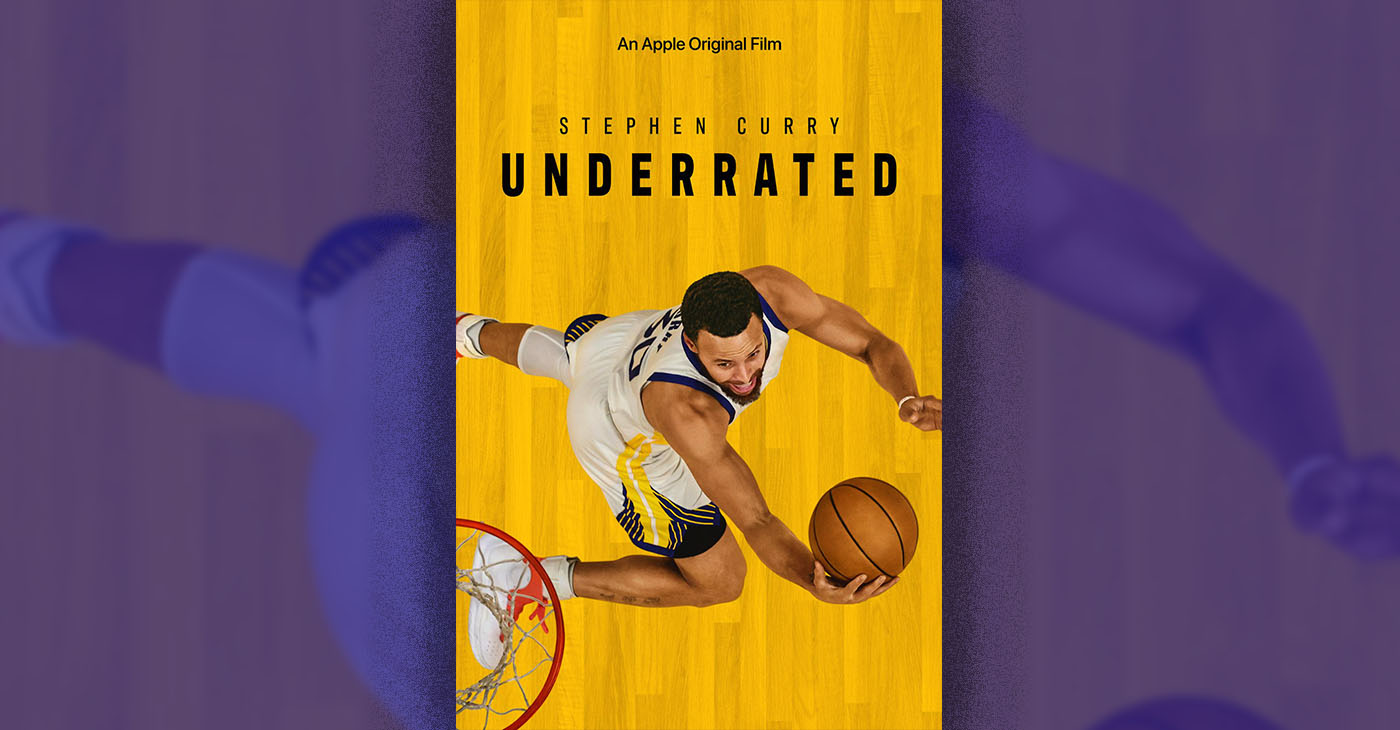
“Stephen Curry: Underrated” will premiere on Apple TV+ on July 21, 2023.
The remarkable coming-of-age story is about one of the most influential, dynamic, and unexpected players in the history of basketball: Stephen Curry.
This feature documentary — blending intimate cinéma vérité, archival footage and on-camera interviews — documents Curry’s rise from an undersized college player at a tiny backwater Division I college to a four-time NBA champion, building one of the most dominant sports dynasties in the world.
The film draws its name from Curry’s college experience and early years in the NBA. In the authorized trailer of the film, footage and photos of him at Davidson College show a boyish Curry, at 150 pounds, swamped by his outsize uniform.
Sportscasters openly scoffed. “Steph Curry: Do not rely on him to run your team,” one warned. “He looks like a little kid,” another said.
In a voiceover, Curry asks himself, “How did I get here? I was an undersized, scrawny kid just trying to figure out how to make it.”
More footage shows him under pressure at a game, plotting his next move and another grinning at advice from a toddler.
In relaying how overwhelmed he had felt, he said “the feeling of being underrated is part of the drive that keeps [him] going.”
The film is produced by Peter Nicks, Ryan Coogler, Erick Peyton, Sean Havey, Ben Cotner and Marissa Torres Ericson. Emily Osborne, Sev Ohanian and Zinzi Coogler are executive producers.
The film features (in order of appearance): Reggie Miller, Stephen Curry, Dell Curry, Bob McKillop, Kevin Durant, Jason Richards, Sonya Curry, Brandon Payne, Shonn Brown, Matt Matheny Candy Adams, Lexus Safford, Mercedes Safford, Ryan Curry, Dr. Gayle Kaufman, Canon Curry, Riley Curry, Ayesha Curry, Andrew Lovedale, Jim Fox, Thomas Sander, Michael Kruse, Lauren Biggers and Steve Rossiter.
The film is rated PG-13 for brief strong language.
Story courtesy Apple+ films media relations division.
-

 Activism4 weeks ago
Activism4 weeks agoOakland Post: Week of March 20 – 26, 2024
-

 #NNPA BlackPress3 weeks ago
#NNPA BlackPress3 weeks agoCOMMENTARY: D.C. Crime Bill Fails to Address Root Causes of Violence and Incarceration
-

 #NNPA BlackPress3 weeks ago
#NNPA BlackPress3 weeks agoMayor, City Council President React to May 31 Closing of Birmingham-Southern College
-

 #NNPA BlackPress3 weeks ago
#NNPA BlackPress3 weeks agoFrom Raids to Revelations: The Dark Turn in Sean ‘Diddy’ Combs’ Saga
-

 #NNPA BlackPress3 weeks ago
#NNPA BlackPress3 weeks agoCOMMENTARY: Lady Day and The Lights!
-

 #NNPA BlackPress3 weeks ago
#NNPA BlackPress3 weeks agoBaltimore Key Bridge Catastrophe: A City’s Heartbreak and a Nation’s Alarm
-

 #NNPA BlackPress3 weeks ago
#NNPA BlackPress3 weeks agoBaltimore’s Key Bridge Struck by Ship, Collapses into Water
-

 Activism3 weeks ago
Activism3 weeks agoOakland Post: Week of March 27 – April 2, 2024





